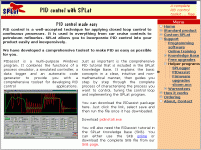PID tuning
I find this emperical method of PID tuning from the Micrologix 1500 manual is quite good. From 1762-rm001e-en-p section 19-23.
http://www.ab.com/manuals/cp/1762-rm001e-en-p.pdf
Another way to do it;
1.Turn off the I and D compnents
2.Set the P component until the process oscillates at its natural period
3.Set the loop update time to 1/10 of the natural period
4.Set the P component to about 1/2 that required for oscillation
5.Adjust P until the process is steady but with a steady state error
6.increase the I component until the steady state error is within limits
7. If external influences cause instability then introduce some D term until the process is stable.
Test using a step test.
Process overshoots - Increase D or reduce I
Process oscillates reduce P
Process under shoots but reaches SP then reduce D
Steady state error - increase I
Response too slow - increase P or I
Bear in mind that changing one parameter will influence the others and depends on the PID equation you are using.
Make only SMALL changes.
Use a graphical recording device such as a chart recorder or TrendX in RSLogix to follow your process and analyse your adjustments
If it will not control then go back and start again, don't persist with adjustments if you loose control of your process.
For slow response systems a D term is not usually necessary so turn it off if you don't need it.
If you have the choice use a purpose built PID controller with auto tuning and fuzzy logic. PID control in PLCs is difficult at best and can be a nightmare.
.








